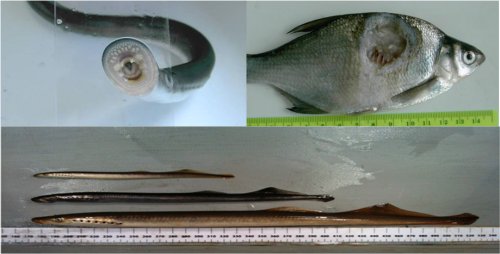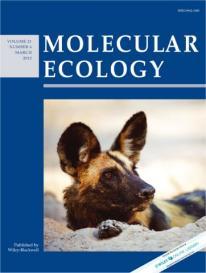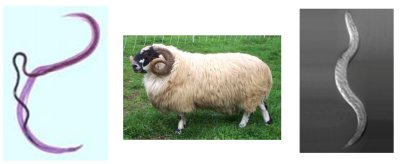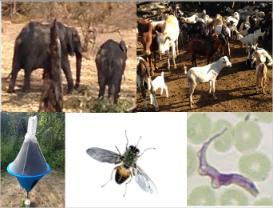Recent Collaborative PhD Student Projects
Local adaptation in Scottish mountain frogs
The Scottish highlands provide a naturally replicated system (i.e. mountain gradients) for assessing how climatic variables such as temperature and rainfall might influence the persistence and genetic connectivity of organisms, without complications associated with human-induced habitat contraction. In partnership with the Royal Zoological Society of Scotland (Rob Thomas) and Roman Biek (IBAHCM), this PhD project (Anna Muir) used common frogs (Rana temporaria) as a model to investigate how altitudinal gradients affect local adaptation and patterns of gene flow in the nearly continuous wetland habitat available in the highlands. We found that, despite lack of population structure in the region surveyed (Muir et al. 2013 Molecular Ecology), there was evidence for local adaptation in relation to elevation (Muir et al 2014 Molecular Ecology) and plasticity in physiological adaptations to low temperatures (Muir et al. 2014 BMC Biology).

Ecological speciation in lampreys in Scotland
Although there are a variety of processes by which populations can diverge to become species, one of the most controversial is whether populations living in the same place but utilizing different resources can speciate. Lampreys demonstrate repeated evolution of variation in feeding adaptations (i.e. parasitic or nonfeeding as adults) and lifestyle (i.e. anadromous or remaining in freshwater habitats). In partnership with Scottish Natural Heritage (Colin Bean) and Colin Adams (SCENE, IBACHM), this PhD project (John Hume) examined whether populations in the Loch Lomond cachement area that display a range of differences in morphology and feeding should be considered as distinct species or just phenotypic plasticity within species. We also used samples collected during the project to investigate whether previous conclusions about ecological speciation within the catchment area were supported by genome-wide patterns of variation based on RAD sequencing (Hume et al. 2018 Molecular Ecology).

Conservation genetics of captive and wild populations of African wild dogs
African wild dogs are one of the world’s most highly endangered canids. In partnership with the Royal Zoological Society at Edinburgh Zoo (Rob Thomas), Lorna Kennedy (University of Manchester), Bob Wayne (University of California) and Dan Haydon (IBAHCM), this PhD project (Clare Marsden) compared levels of diversity in wild and captive populations at both neutrally evolving and potentially adaptive genes (Marsden et al. 2009 Journal of Heredity; Marsden et al. 2012 Molecular Ecology) in order to make genetically informed management decisions about captive breeding programmes in European zoos (Marsden et al. 2013 Conservation Genetics) . Mixing of individuals between zoos for breeding had been opportunistic, which has resulted in high levels of inbreeding within the zoo populations. Nevertheless, captive populations appear to maintain most of the diversity found in the wild, which increases the value of strategic breeding programmes. Moreover, comparing genetic variation in historic and recent samples suggested that recolonizing populations in the Serengeti ecosystem were genetically indistinguishable from a population that was thought to have gone extinct, suggesting movement of animals rather than local extinction (Marsden et al. 2012 Conservation Genetics).

Resistance evolution and epidemiology of parasitic worms
Parasitic worms provide substantial economic problems to livestock and animals managed for hunting, particularly if resistance develops to drugs used for their control. However, surprisingly little is known about the host and parasite factors that influence resistance evolution. A previous PhD student project (Lucy Webster) initiated by Lukas Keller that I co-supervised (in collaboration with Paul Johnson and Aileen Adam, IBAHCM) focused on evaluating resistance development in parasites in relation to their mating system (in managed grouse populations in Scotland). A surprising finding was that there didn’t appear to have been evolution or resistance in worms from these birds, despite high resistance in livestock (Webster et al. 2008 Veterinary Parasitology). Paternity analysis revealed high levels of both polyandry and polygyny (Johnson et al. 2010).
A previous PhD student (Alan Reynolds) took an experimental evolution approach to model how the interaction between host factors (e.g. mating system, life history tradeoffs, demographics and population genetic structure) and treatment regimes affect resistance evolution in nematode, using Caenorhabitis remanei as a model. This project was conducted in collaboration with Paul Johnson and Jan Lindström (IBAHCM). An important finding was that apparently rapid evolution of resistance to a commonly used anthelminthic (Ivermectin) was actually due to a shift in life history traits, leading to an increased tolerance rather than heritable resistance (Reynolds et al. 2016 Evolutionary Applications). This work is being followed up by a current student, Sam Brown, using parasitic nematodes of sheep (Haemonchus contortus).

Host-vector-parasite dynamics
Jared Bakuza initiated a PhD project (funded by a competitive scholarship from the Glasgow Centre for International Development) that used parasitic worms to establish whether human parasites can pose a conservation risk to wild animals in managed park situations (in nonhuman primates in Africa) and the environmental factors that affect transmission dynamics in humans. This project was conducted in collaboration with Prof. Gamba Nkwengulila (University of Dar Es Salaam), Mike Stear (Institute of Infection, Immunity & Inflammation, Glasgow) and Matt Denwood (School of Veterinary Medicine, Glasgow). Despite very high levels of resistance in human settlements around the park (Bakuza et al. 2017 PLoS Neglected Tropical Diseases), snails in the streams in the park did not carry schistosomes, suggesting the risk of cross transmission to nonhuman primates was low (Bakuza et al. 2017 Parasites & Vectors).
Manun Channumsin (nee Wongserepipatana) investigated the complex dynamics of trypanosome prevalence in tsetse flies in relation to geography, intrinsic factors of the flies, community composition of hosts, and presence of an endosymbiont that had been associated with refractoriness to the parasite. This work was initiated by Mike Turner, in collaboration with a postdoc, Marc Ciosi, and Dan Masiga from icipe in Kenya. The system is complicated because there are multiple species of tsetse flies that can transmit multiple species of trypanosomes to a wide range of host species. There was not a strong association between prevalence of parasites and the endosymbiont but complex interactions with site and characteristics of the flies (Channumsin et al. 2018 BMC Microbiology).


